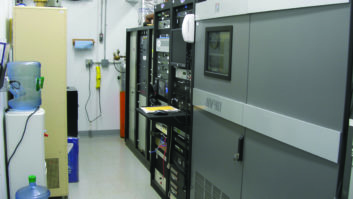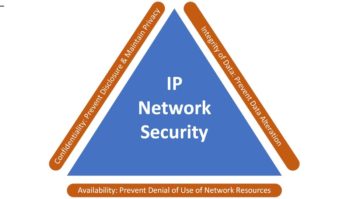It seems hardly a week goes by that we don’t hear about some multiple shooting event. It’s stating the obvious but: No place is safe. Now factor in the field in which we broadcasters work, and we add a bit more to our risk factor.

Every media outlet attracts attention and many are lightning rods in today’s polarized culture. If you have never considered your radio station a target, you either haven’t given it much thought or your transmitter has been off for a while.
Certainly there are formats that lend themselves to more controversy. Talk, especially political, immediately comes to mind. In another lifetime, I was program director for one of this company’s talkers. We took strong stands on many hot-button issues. I can vividly remember taking numerous complaint calls and can never forget getting a visit from the Secret Service.
My employer has many Christian-formatted stations. On the surface, this wouldn’t seem like a format that would have to worry about an unstable person coming in to the station and causing problems. For those of us who worked in this format for a while, we know that’s not the case. Any format that can generate passion will incite some individuals on the edge to do more than write a strongly-worded letter.
I have never worked a sports format but I can’t imagine a sports fan getting passionate. (Remove tongue from cheek.)
TAKE THREATS SERIOUSLY
We live in an era where there are enough individuals on the edge that we must take these things seriously. If you haven’t thought through active shooter scenarios and how you would prepare and respond to one at your station, I humbly submit that the time has come. Just Google “Radio Station Shooting” and you’ll see numerous stories on the Madison, Wis., station that was the subject of an active shooter last August. Nothing like seeing a picture of a bullet hole in studio glass to make you think.

You just never know who is coming through that front door sometimes. Where I am writing this article it crosses our minds a lot. We’re in a neighborhood that has many homeless who wander the streets. Beyond the expected panhandling, many of these individuals often seem on the edge of rage. That doesn’t mean they are likely to come in and shoot up the station; but we have had one of them manage to get into the building with a sickle. Fortunately, this individual was looking for temp work to cut our weeds (we don’t have a lawn). He put out vibes that made all of us uncomfortable.
More recently, I was working with one of my engineers at our front-gate control pedestal because of a problem with the access card reader for the gate. I went back into the building for one minute to check something inside.
[MacGyver in the Age of Centralized IT]
By the time I got back out to the front gate, my engineer had been confronted by a passerby who had asked him for tickets. He told him he wasn’t in charge of tickets, at which point the passerby let out a lot of expletives and then threatened to come back and “shoot up the station and burn it down.” This wasn’t an individual who won tickets and showed up to the station to collect his prize. Our surveillance video showed that he was walking from one of the local neighborhoods and then back again to the same neighborhood later.

Once I found out, we called the police. I was 99.9999 percent sure that this was somebody shooting their mouth off, but with today’s environment, you have to take every threat seriously. We collected all the appropriate videos from our security system so that we could forward them to the police. This is important so that you get a record of the event, because sometimes these events escalate over time.
I’m reminded of another event in Wisconsin, this time at a television station. An unstable individual had stolen a crucifix from a church and then took it to the TV station and was using it to bash the digital sign board along the sidewalk outside. Just a few days before, the TV station had found blue crosses painted on one of their exterior doors. In all likelihood, this was the same individual escalating his actions.
We need to take any event like this seriously and get it on record with the local authorities. It could be related to events they’ve seen elsewhere and our report might help them stop an unstable person before they do greater harm.
THE PANIC BUTTON

We have had many of these incidents, enough to cause us to take steps to better our security.
When I first got here, we had an intercom system that was an aging off-the-shelf system from Radio Shack. It didn’t work too well. With the amount of road noise at our front gate, it was not practical for the receptionist to screen the public properly before letting them in our front gate or front door.
Certainly, a very important aspect of security is to not let the potential problem makers into the building in the first place. We ended up installing a newer system that featured noise cancellation. This works well, but in reality, it is only as good as the person doing the actual screening.
I also designed a panic button system for the reception position using our Avaya phone system. We simply designated one of the unused extensions on our phone system as our panic alarm. We use an analog output on the phone system to an Enberg FN-2 Phone Relay module that will set off buzzer alarms throughout the offices.
The extension is assigned on a button at reception and labeled panic. Furthermore, any calls to the extension are forwarded automatically to 911. When the person at the reception desk hits the panic button, the alarms are set off and then the call is forwarded to 911, all at the touch of one button.
[A Simple Security Solution … for Your Toolbox]
This was a step in the right direction. But as we analyze our situation further, we know we need to take more steps to keep our staff secure. While we did enclose our receptionist in a booth, it is not really substantial enough to offer much protection against a violent offender. Our hallways from the reception area are open so that anyone wanting to gain access to other parts of the building can easily do so.
GOOD TRAINING
The days of radio stations having open reception desks with open hallways to the rest of the office and studios are probably over. Certainly if we are designing a new office layout, we would design it with greater care to set up barriers to keep a dangerous individual as confined as possible.
It is well worth the time to examine current setups to understand where we are vulnerable. You may find, as we have, that it is difficult to weigh being more secure against the ability of evacuation in case of fire or other events. Setting up barriers could possibly compromise potential fire escapes. Consulting with the fire marshal is not a bad idea; we are planning a meeting with ours to be sure what we do will pass his inspection.
Besides the technical and structural changes that you might want to make, training staff for these scenarios is important. For instance, when the reception panic alarm was set off the first few times, we found that staff members were rushing into the reception area. Not really a good idea as you are adding stress to an already unstable individual. We had to praise our staff for responding so well but caution them to enter the room more casually. You don’t want to add gasoline to a fire.
[Subscribe to our newsletter and get it delivered right to your inbox.]
You also want to make sure they understand their role. We don’t want staff members taking matters into their own hands. Usually, that type of person who wants to be the hero is more likely again to be gasoline. The staff needs to train to understand they are to be witnesses and not heroes. If you are not capable of adding calm to the situation, stay out and let the police arrive and do their job.
It’s not fun to think about these things, but the reality of the news each day should drive us to realize we shouldn’t wait for a tragic event at our facilities to take steps to increase security for protection of our staff.
Rick Sewell, CSRE, CBNT, AMD, is engineering manager at Crawford Broadcasting Company in Chicago.
This article was published in the March 2019 issue of The Local Oscillator, the newsletter of Crawford Broadcasting Company Corporate Engineering.







